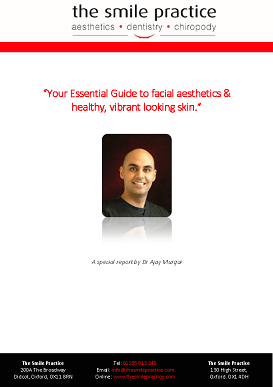
Do you sweat profusely throughout the day, even during cold weather or when you’re not exercising? If yes, you might have hyperhidrosis. But if you’re not aware of what hyperhidrosis is, don’t worry; this blog will explain everything you need to know about this condition and how to treat it effectively with botox treatment.
How To Stop Sweat In My Hand Permanently?
Sweaty hands can cause many problems and embarrassment, especially when you wish to hold hands with your special one. While there are numerous short-term treatment options available to treat hand-sweating, such as using baking soda, keeping hydrated, using botox, and eating a balanced diet, some permanent solutions are also known to treat the sweating of hands. This include:
- Iontophoresis – Iontophoresis has been regarded as one of the effective methods for permanently treating hand-sweating. In this procedure, a mild current is passed through the water below the skin’s surface, reducing the sweating on the hands.
- Medications – according to the Columbia Unversity’s Centre for Hyperhidrosis, certain drugs also effectively combat hand-sweating. Your physician will prescribe a suitable medication after a thorough clinical examination.
- Surgery – if none of the above treatments works, your physician may consider surgical treatment to solve this issue permanently.
I Have Hyperhidrosis. What Do I Do?
According to the American Academy of Dermatology, Hyperhidrosis is characterised by excessive sweating. The sweating can either take place on the entire body, or it can occur only in certain parts like the hands. If you have hyperhidrosis, various treatment options are available to combat this problem. The first step is to consult your healthcare physician, who will perform a detailed examination and advise some necessary tests to diagnose the underlying issue. Once the diagnosis has been made, treatment can be done through any of the following available options:
- Short-term Treatments
- Using antiperspirants when needed
- Alcohol swabs or wipes to remove excessive moisture
- Antiperspirant creams
- Botox injection
- Permanent/ Long-term solutions
- Iontophoresis treatment
- Medications
- Surgical treatment
Is Botox A Cure For Hyperhidrosis?
According to the American Academy of Dermatology, Botulinum toxin A, also called Botox, is an effective option for treating excessive sweating, besides being a remedy to eliminate skin creases and lines. In this treatment, your doctor will inject the diluted form of botox toxin into your underarms to curb excessive sweating. The effects of this treatment last for about 6 months on average. Afterwards, a new treatment is needed for continued results.
In What Areas Is Botox Injected?
The most commonly used site for injecting botulinum toxin is the underarms. However, studies have shown that this anti-sweating treatment may also be effective on other body sites. For example, in some cases, skincare physicians use the botulinum injection to prevent excessive sweating on the scalp in post-menopausal women. It may also be used to control sweating on the hands and feet.
How Does Botox Stop Sweating?
Besides removing sagging lines and skin creases, botox treatment is also effective in treating hyperhidrosis. This treatment works by temporarily stopping the release of a chemical that stimulates the sweat glands in the body. In this way, sweating is controlled temporarily. However, frequent botox injections are needed for continued efficacy in cases of excessive hyperhidrosis.
How Many Different Things Can Be Treated With Botox?
There are two main uses of botox treatment. The first is to remove skin creases and lines. This is achieved by injecting a diluted form of the botulinum toxin A, which temporarily paralyses the skin muscles, thereby resulting in their stretching and the elimination of skin lines. The second use of botox is as an anti-sweating agent. Botox transiently stops the release of a chemical that regulates sweat production, thereby showing efficacy in the treatment of hyperhidrosis.
If Too Much Botox Is Injected, How Do You Reverse The Effects?
Once injected, the effects of a botox injection cannot be reversed. Luckily, injecting too much botox does not cause severe side effects besides causing unwanted drooping of the eyelids or other facial landmarks. The results of the injection will slowly go away in 3-4 months. If there are undesirable cosmetic changes due to the injection, they can be reversed by injecting the injection on the opposite side to compensate for the changes.
Can Botox Injections Cause Health Problems?
Botox treatment is generally safe and does not cause severe allergic reactions. However, if too much of the toxin is injected, it may cause unwanted facial changes, such as drooping or tautness of the eyelids or other facial regions. That is why it is important to visit a qualified, experienced skincare specialist for botox treatment.
What Are The Side Effects Of Botox Injections?
The side effects associated with botox treatment are generally non-severe. Some of these include:
- Transient pain, swelling or bruising at the site of the injection
- Drooping eyelids or cockeyed brows
- Headaches or flu-like symptoms
- Drooling
- Dryness in the eyes or excessive tearing
What Is The Best Affordable Treatment For Hyperhidrosis?
Your dentist will recommend a suitable treatment for hyperhidrosis after a thorough clinical examination and determination of your medical needs. However, botox treatment has been regarded as one of the most cost-effective and efficient treatments for hyperhidrosis.
If you are suffering from excessive hand-sweating and looking for a renowned and reliable skincare specialist in Oxford, The Smile Practice is at your service! To find out how hyperhidrosis treatment in Oxford or Didcot can help beat excessive sweating, please request a free video consultation today.

This post has been written by Dr Ajay Murgai, he is a highly experienced General and Cosmetic Dental Surgeon. Dr Ajay runs clinics in Hertfordshire, South Oxfordshire and Harley Street, and carries out a full spectrum of treatments from Aesthetic Dentistry to routine examinations.





















